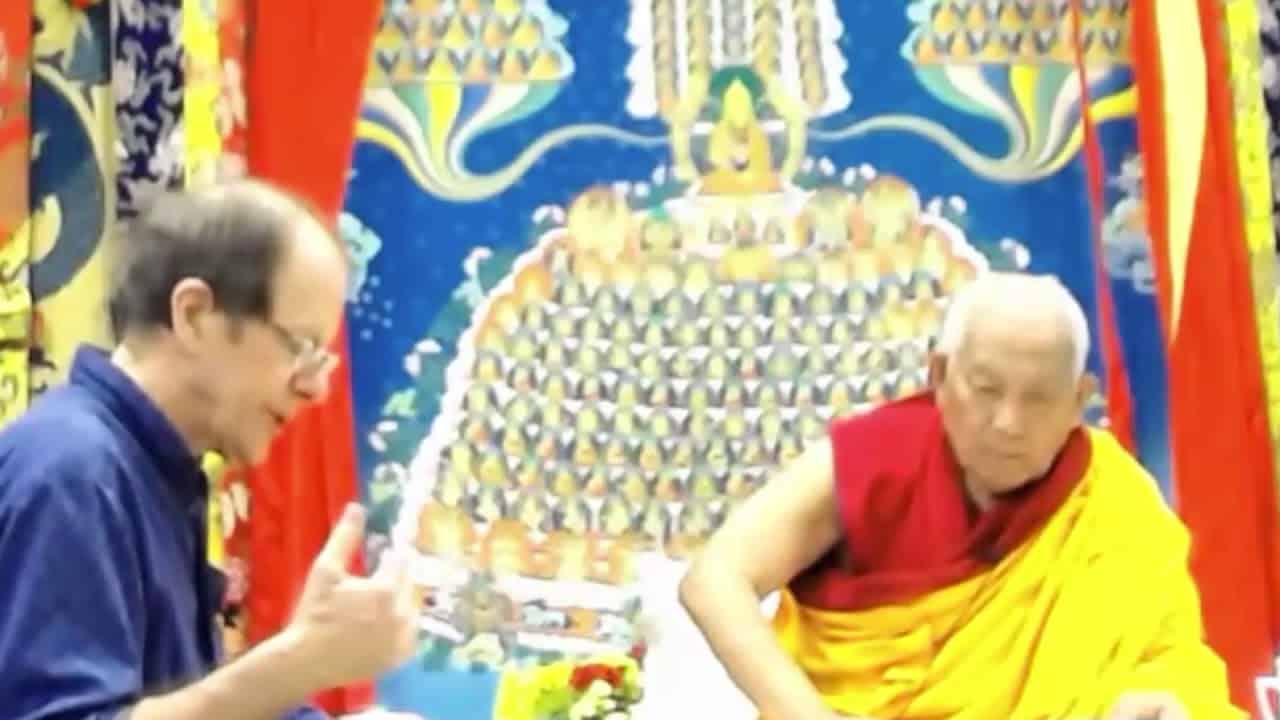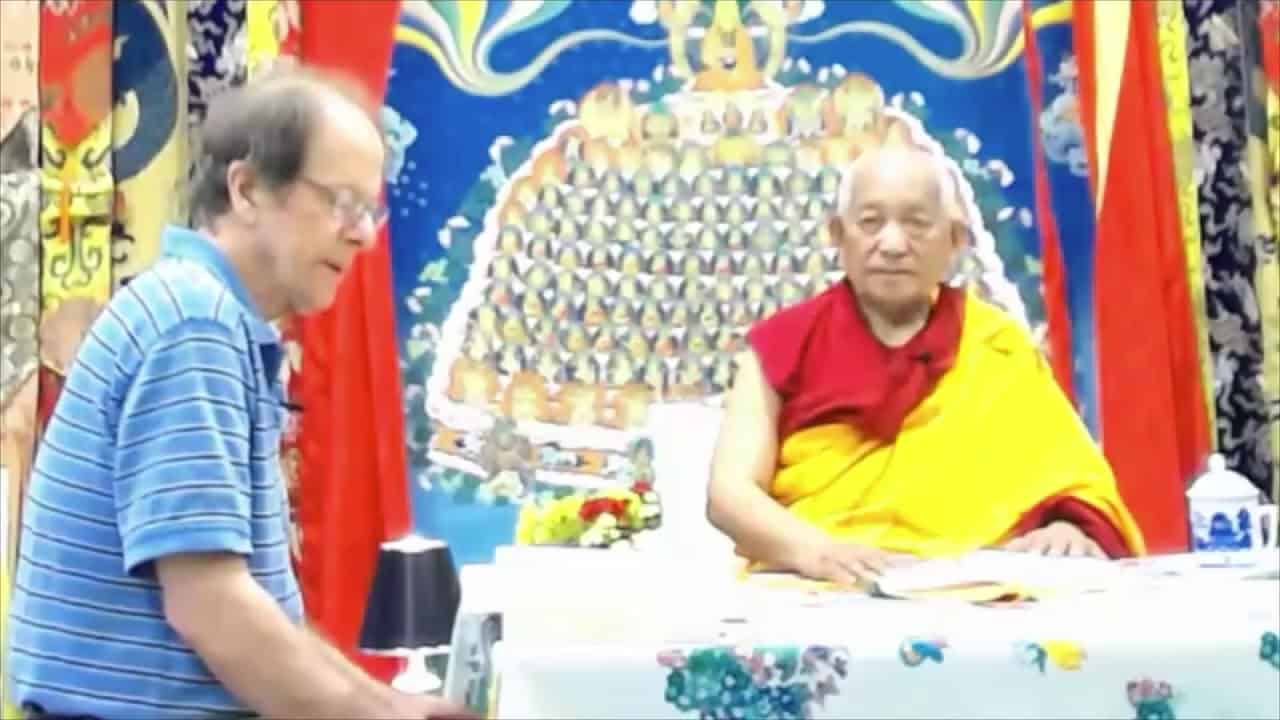Chapter 13: Verse 301-306
Chapter 13: Verse 301-306
Part of a series of teachings on Aryadeva’s 400 Stanzas on the Middle Way given on an annual basis at Sravasti Abbey by Geshe Yeshe Thabkhe beginning in 2013.
- Refuting that a sense consciousness directly perceives an object existing from its own side
- Why awareness arising in dependence upon individual sense organs is not direct perception
- Absurdity of positing that other parts of an object are seen because its visible form is seen
- Refuting direct perception of just visible form existent under its own power
- The visible form does not exist inherently but is imputed in dependence upon many parts
- Even the smallest particles cannot exist inherently because they depend on their parts, otherwise they would be inapprehensible
- Explaining why all dependently arising phenomena are mere names and terms
Geshe Yeshe Thabkhe
Geshe Yeshe Thabkhe was born in 1930 in Lhokha, Central Tibet and became a monk at the age of 13. After completing his studies at Drepung Loseling Monastery in 1969, he was awarded Geshe Lharampa, the highest degree in the Geluk School of Tibetan Buddhism. He is an emeritus professor at the Central Institute of Higher Tibetan Studies and an eminent scholar of both Madhyamaka and Indian Buddhist studies. His works include Hindi translations of The Essence of Good Explanation of Definitive and Interpretable Meanings by Lama Tsongkhapa and Kamalasila's commentary on the Rice Seedling Sutra. His own commentary, The Rice Seedling Sutra: Buddha’s Teachings on Dependent Arising, was translated into English by Joshua and Diana Cutler and published by Wisdom Publications. Geshela has facilitated many research works, such as a complete translation of Tsongkhapa’s The Great Treatise on the Stages of the Path to Enlightenment, a major project undertaken by the Tibetan Buddhist Learning Center in New Jersey where he teaches regularly.


